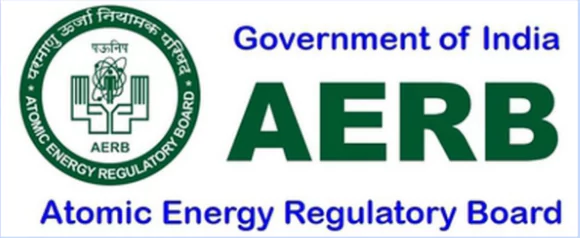The Union Budget’s proposal to amend the Civil Liability for Nuclear Damage Act (CLNDA) has raised serious concerns about nuclear safety, economic viability, and the rights of Indian citizens.
- This move is likely to appease U.S. nuclear corporations, which have long opposed the liability provisions in India’s nuclear policy.
What is a Nuclear Liability Law?
- A nuclear liability law is a legal framework that defines the responsibilities, compensation mechanisms, and financial security requirements in case of a nuclear accident.
- It ensures that victims receive compensation and clarifies who is liable for damages.
- Examples of Nuclear Liability Laws:
- International Conventions:1997 Convention on Supplementary Compensation for Nuclear Damage (CSC)
- National Laws:India: Civil Liability for Nuclear Damage (CLND) Act, 2010
Need for a Nuclear Liability Law in India
- Public Safety & Compensation for Victims: In case of a nuclear accident, a liability law ensures that affected individuals receive compensation for health, property, and environmental damages.
- Without a legal framework, victims may struggle to claim compensation, as seen in past industrial disasters like Bhopal Gas Tragedy (1984).
- Legal Clarity & Operator Responsibility:The law defines who is responsible for nuclear damage, reducing confusion and lengthy legal battles.
- Encouraging Foreign Investment & Technology Transfer: The CLND Act aligns India with international standards, making it easier for India to attract foreign investment in nuclear projects.
- Compliance with International Conventions: India has signed the Convention on Supplementary Compensation for Nuclear Damage (CSC) in 2010 and ratified it in 2016.
- The CLND Act ensures that India meets the CSC’s requirements, allowing access to international compensation funds in case of a disaster.
Current Liability Framework in India

- The Bhopal Gas Disaster (1984) set a precedent for absolute liability in industrial accidents.
- The Delhi Oleum Gas Leak Case (1986) reinforced the “absolute liability” principle for hazardous industries.
- However, the Civil Liability for Nuclear Damage Act, 2010 diluted this principle by:
- Capping operator liability at Rs.1,500 crore (much lower than actual damages in past nuclear accidents).
- Allowing a “right of recourse”, where the operator (NPCIL) can seek compensation from the supplier in case of faulty equipment.
Supplier Liability – A Unique Feature in India’s Law
- Unlike international norms, India’s law holds suppliers liable in certain cases.
- CLND Allows the operator to seek compensation from the supplier if a nuclear accident is caused by defective equipment or substandard services.
- It also leaves room for suppliers to face legal action under other civil laws, leading to concerns about unlimited liability.
Why is Supplier Liability a Concern?
- Most international nuclear liability frameworks (such as the Convention on Supplementary Compensation (CSC)) follow the principle that only the operator is liable.
- This prevents legal complications and ensures that a single entity is responsible for securing insurance.
- Supplier liability under CLNDA makes companies hesitant to do business due to:
- Uncertainty about financial risks: No clear cap on how much liability suppliers could face.
- Potential for lawsuits: It allows claims against suppliers under other laws, creating legal ambiguity.
- Higher insurance costs: Suppliers must set aside large amounts to cover potential damages.
Civil Liability for Nuclear Damage Act (CLNDA)
- The Civil Liability for Nuclear Damage Act (CLND Act) was enacted in India in 2010.
- It establishes liability for nuclear accidents and ensures compensation for victims.
- The law mandates high liability for suppliers of nuclear components, unlike international norms where only operators are held responsible.
- It was enacted following concerns raised in Parliament over the Bhopal Gas Tragedy (1984).
- The Act was particularly important for India’s nuclear power development and international nuclear commerce.
- The Act faced some criticism from nuclear suppliers concerned about liability provisions.
Atomic Energy Act
- The Atomic Energy Act governs nuclear energy development in India, allowing only government-controlled operations with limited private sector participation.
- In 2019, an insurance pool of Rs. 1,500 crores was set up to cover liability risks, but it failed to attract foreign investors.
|
Convention on Supplementary Compensation for Nuclear Damage (CSC), 1997:
- The Convention on Supplementary Compensation for Nuclear Damage (CSC) was established to create a global nuclear liability regime and to increase the amount of compensation available to victims of nuclear accidents.
- It ensures that funds beyond national liability limits are available in case of a nuclear incident.
Eligibility for Membership:
- Member of Existing Nuclear Liability Conventions: A state that is already a party to either the 1963 Vienna Convention or the 1960 Paris Convention can join the CSC.
- Independent National Law Compliance: A state that is not a member of these conventions can still join if its national nuclear liability law aligns with the .
India’s Participation in the CSC:
- Signing of CSC: India signed the CSC in 2010 based on its national nuclear liability law—the Civil Liability for Nuclear Damage (CLND) Act, 2010.
- Ratification: India ratified the CSC in 2016, making it a State Party to the convention despite not being a member of the Vienna or Paris Conventions.
|
What the Amendments Might Change?
- The government may weaken or remove the “right of recourse”, shielding suppliers from any legal or financial responsibility.
- This move would align India’s nuclear liability laws with other countries that fully indemnify suppliers.
Reasons Behind Amending the Atomic Energy Act and CLND Act
- Attracting Foreign Investment and Suppliers: Amendments could limit supplier liability, making India a more attractive market for nuclear investments.
- It will encourage participation from countries like the U.S., France, and Russia.
- Expanding Nuclear Energy Capacity: Complex liability laws slow down agreements with international partners and simplifying them may accelerate nuclear deals and partnerships.
- Aligning with Global Standards: Currently India’s liability framework differs from international norms, where liability is typically channeled to the operator, not suppliers.
- Amendments will align Indian laws with global standards.
- Boosting Domestic Energy Security: Increased nuclear capacity will reduce dependence on fossil fuels and increase the share of clean energy in India’s energy mix.
The Right of Recourse Under India’s Nuclear Liability Laws
- India’s nuclear liability law, the Civil Liability for Nuclear Damage Act (CLNDA), includes a unique provision called the ‘right of recourse’.
- Definition: The right of recourse enables nuclear plant operators to claim compensation from suppliers in case of accidents resulting from defective equipment, design flaws, or poor services.
- Purpose: This provision ensures that suppliers share responsibility for nuclear safety and are held accountable for their role in accidents.
Significance of the Right of Recourse
- Supplier Accountability: It ensures that suppliers are held responsible for their role in nuclear accidents, promoting higher safety standards.
- Economic Incentives for Safety: Suppliers are motivated to prioritize quality control and address potential risks to avoid liability.
- Protecting Public Interest: By holding suppliers accountable, the right of recourse helps safeguard public safety and ensures justice for victims in the event of an accident.
Key Concerns about Proposed Amendments
- Dilution of Liability: The proposed amendments to Civil Liability for Nuclear Damage Act, 2010, channels primary liability to the operator (NPCIL) and caps it at Rs. 1,500 crore.
- This cap is grossly inadequate compared to the actual costs of nuclear disasters.
- For example, the Fukushima disaster cleanup cost is estimated at Rs. 20-46 lakh crore, over a thousand times the Indian liability cap.
- Right of Recourse: The proposed amendments may further dilute the “right of recourse,”.
- Right of recourse allows operators to claim compensation from suppliers in case of defects or sub-standard services.
- Unfair Burden on Citizens: If nuclear suppliers are indemnified, Indian citizens living near reactors bear the brunt of risks to life and property.
Way Forward
- Strengthening the Liability Framework:
- Maintain the Right of Recourse: Instead of eliminating it, refine the provision to specify clear conditions under which suppliers are liable, ensuring accountability while addressing industry concerns.
- Increase the Liability Cap: The current cap of Rs. 1,500 crore is inadequate. A higher, inflation-adjusted cap should be set, considering global precedents like the Fukushima disaster.
- Enhancing Nuclear Safety and Regulation:
- Strengthen the Atomic Energy Regulatory Board (AERB): Convert it into a truly independent statutory body, ensuring that nuclear safety regulations are implemented without political or corporate influence.
- Periodic Safety Audits: Implement mandatory third-party safety reviews for all nuclear plants to ensure compliance with international best practices.
- Balancing Investment and Public Safety: While making India attractive for foreign investments, supplier accountability should not be entirely removed.
- Transparent Public Consultation: Ensure that any amendments to CLNDA involve stakeholder discussions, including civil society, legal experts, and environmental activists.
- Fast-track Nuclear Disaster Response Teams: Establish specialized rapid response units to handle nuclear emergencies efficiently.
Conclusion
While India aims to expand its nuclear capacity for energy security, amendments to CLNDA should not compromise safety, accountability, and public welfare. A balanced approach—ensuring supplier responsibility, strengthening safety measures, and creating robust compensation mechanisms—will allow India to achieve sustainable and responsible nuclear energy growth.
Atomic Energy Regulatory Board (AERB)

- The Atomic Energy Regulatory Board (AERB) was constituted in 1983, by the President of India under the Atomic Energy Act, 1962.
- It was established to carry out regulatory and safety functions in the nuclear energy sector.
- The primary mission of the AERB is to ensure that ionizing radiation and nuclear energy are used in India without posing undue risks to human health and the environment.
- It regulates industrial safety in Department of Atomic Energy (DAE) units under the Atomic Energy Act, 1962.
- It also administers provisions of the Factories Act, 1948, for nuclear energy establishments.
|
![]() 14 Feb 2025
14 Feb 2025


